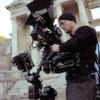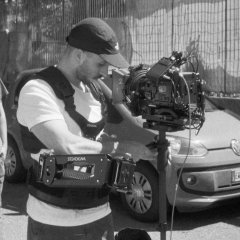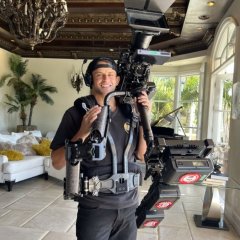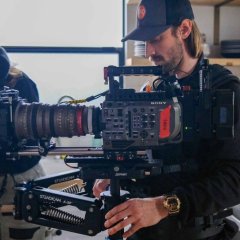-
Posts
102 -
Joined
-
Last visited
-
Days Won
9
Kevin Kisling last won the day on April 7
Kevin Kisling had the most liked content!
Reputation
16 GoodProfile Information
-
Location
Los Angeles
-
Rig
Steadicam Aero 30
Recent Profile Visitors
4,373 profile views
-
@David Marroquin Yes I have, I go there pretty often when I'm not working! They have a nice space and you can move fly-away walls around to change up shots. It's fun! Also really great because you can ask Tiffen questions and get lots of help with gear/etc...
-
@Thomas Gottschalk I did the cut out mod and it has been amazing. I highly recommend it!
-
Hey @David Marroquin I believe you are correct and that the Zephyr is/has been discontinued and the Axis is replacing it. I'm not sure if the volt for the Axis will be available on its own, but it's worth reaching out to Tiffen to ask!
-

Someone was selling a Cinelevel about 3 weeks ago . . .
Kevin Kisling replied to Keith Wood's topic in General Discussion
Hi Keith, I have a metal version for sale in Los Angeles. Let me know if you are interested. Kevin -
I ended up taking it to Robert Luna for service. Would highly recommend using him.
- 3 replies
-
- master arm
- arm service and cleaning
- (and 3 more)
-
Such a great video. I was recently asked to do whip pans while holding a tilt, so the post wasn't vertical and I don't have a tilt top stage. I struggled but eventually was able to get through it. Do you have any advice on this? Thanks!
-
Hi Thomas! Thanks, I think I will!
-
@Thomas Gottschalk and @Deke Keener I've been considering doing the same mod, adding the padded fork to my hill dock and having it cut out for the balancing pin. Now that it's been a couple of years, is this still your setup? How has it held up? Have you run into any issues? Thanks!
-
Hi Hayk! I think much of this would depend on budget and preference and if you are buying new or used. If you can, meet up with ops close to you and check out their gear so you can get a feel for it first. They all do the same thing, but each go about it in a slightly different way. You can certainly buy a whole kit from Tiffen, GPI PRO, ARRI and be very happy. or you can mix and match them to your preference. Sleds: Tiffen, GPI PRO, ARRI, XCS, Betz, Optical Support, Arms: Tiffen, GPI PRO, ARRI, flow cine Vests: Tiffen, GPI PRO, ARRI, Klassen I'm sure I've missed some, but that'll get you started. I bought a whole used tiffen master kit and now I've added a PRO vest to my kit. Next I plan on swapping out my sled. Then I'm planning on adding another arm to my kit. Best of luck!
-
Wow. Thanks for the update!
-
Does anyone know the height of the various Tiffen M Series Top Stages? The distance from the dovetail plate to the bottom of the top stage? M1 flat, M1 tilt, M2 flat, M2 tilt. Thanks!
-
Hey Maxwel, did you ever find out how much they weigh? I'm curious as well
-
Great question! The Zephyr vest is great, but in my personal experience whenever I flew my Aero30 rig (Zephyr vest/arm/aero30 sled) towards it's max payload (20lbs) I could feel the vest flex a little. I'm sure adding cross back straps would help a lot. If you are planning on flying cameras above 20lbs, I think getting a big rig vest would be best. Here is a link to a previous discussion on the Zephyr vest with bigger arm and sled:
-
I've also been experiencing so many ads!
-
Tiffen was still using 1.58 posts on all their big rigs until the M1 came out with a 1.75 post. So I imagine their 1.58 would still be good. and its quite a bit lighter!






